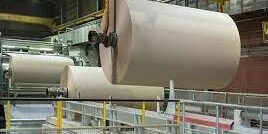How can plastic defoamers be added and used?
Driven by the huge demand for raw materials and products in various industries in China, major upstream manufacturers are also carrying out production in full swing. And in order to ensure their strong competitive position in the industry, product quality can basically be guaranteed. It can be said that there are basically no problems in the upstream, but what about the downstream? Especially for downstream manufacturers in the field of defoamers? The problems they have are also not to be ignored.
According to experts in the professional research and development and production of defoamers, the main reason why there are problems with downstream demand manufacturers is that manufacturers always say “the product performance is not good, it is difficult to effectively achieve the purpose of defoaming” when using related defoamer products. However, each defoamer product is tested before leaving the factory, even for water-based defoamers and even silicone defoamers, the most accurate performance measurement is obtained. However, the reason why this situation occurs in actual applications is that most of the demand manufacturers fail to master the correct method of use. The following is a specific introduction by industry experts taking plastic defoamer products as an example.
Industry experts point out that defoamers refer to agents with chemical and interfacial chemical defoaming effects. The specific process of defoaming agent to suppress and break foam is: when the defoaming agent is added to the system, its molecules cover the surface of the liquid in a disordered manner, suppress the formation of an elastic film, and stop the generation of foam. If a defoaming agent is added to many systems that generate foam, its molecules will quickly spread on the surface of the foam, quickly open and spread all over, forming a very thin double film layer, and then gradually disperse, penetrate, and invade in layers, and then replace the original foam film thin wall.
Plastic defoaming agent is mainly suitable for circuit board (PCB) processes; chemical industry; electroplating; printing and dyeing; papermaking; medicine; water-based ink; ceramic slitting; steel plate cleaning; aluminum processing; various sewage treatments and various industrial water systems. Defoaming and suppression. Dilution: dilute before adding to the system. The diluent can be water or a surfactant in the system. Order: move the order of adding plastic defoaming agent forward.
For plastic defoamers, there are three main ways to use them:
1. Intermittent addition: Intermittent addition requires taking a certain amount of plastic defoamer and then adding it to the plastic defoamer mixing tank together with 5-10 times the amount of water. It needs to be gently stirred at room temperature in order to evenly disperse it in the water to obtain a diluent. When foam is generated in the system, take an appropriate amount of diluent and add it to the system at one time to control the foam.
2. Continuous addition: Continuous addition is to take a certain amount of plastic defoamer and add 5-10 times of water to the plastic defoamer preparation tank. Also at room temperature, gently stir it to make it evenly dispersed in water to obtain a diluent. Then the diluent is continuously added or dripped into the foaming system to control the foam.
3. One-time addition: The one-time addition method is mainly for closed systems (or plastic defoamer as an additive), because it is necessary to add plastic defoamer once to control the foam. Select the appropriate plastic defoamer and then add it to the system once to control the foam.







